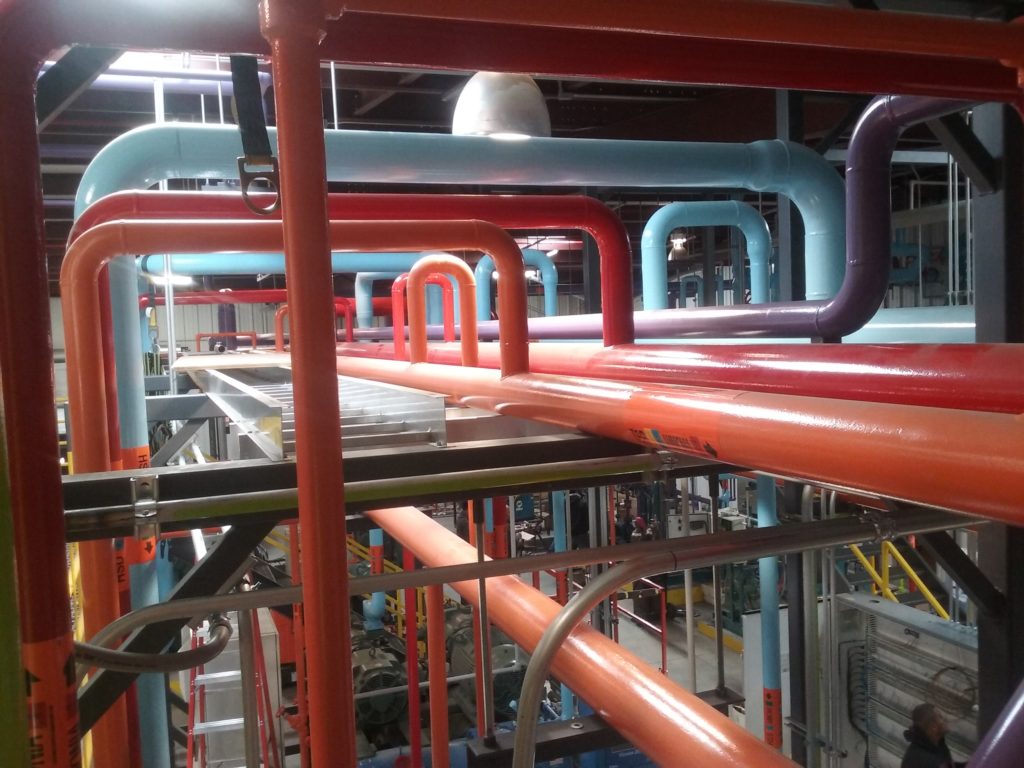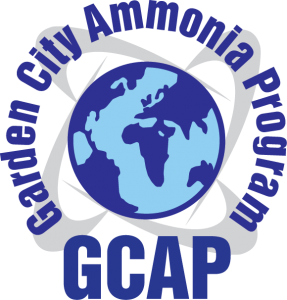GCAP’s Ammonia Technician One
Prerequisite: Ammonia Operator I & II Credentials or approved testing credentials
Click Here To Register Today
All of this material is covered or introduced to the student at our seminar. The course will incorporate running hands on equipment in the lab if taken at GCAP’s facility. This selection of material will allow success in companies training structure and it follows the IIAR Training Task Force Guideline.
Ammonia Operator III (RAGAGEP) will use the most current printed IIAR Ammonia Refrigeration Library as primary text
- Cascade Refrigeration
- Electrical
- ANSI/IIAR 1
- Definitions and Terminology used in IIAR Standards
- ANSI/IIAR 2
- “Equipment , Design, and Installation of Closed-Circuit Ammonia Mechanical Refrigerating Systems”
-
- General
- Definitions
- Reference Standards
- Location of Ammonia Refrigeration Machinery
- Machinery Rooms
- Refrigeration Equipment Located in Areas Other Than Machinery Rooms
- Equipment
- Compressors
- Refrigerant Pumps
- Condensers
- Evaporators
- Pressure Vessels
- Piping
- Packaged Systems and Equipment
- Overpressure Protection Devices
- Instrumentation and Controls
- Ammonia Detection and Alarms
-
- “Equipment , Design, and Installation of Closed-Circuit Ammonia Mechanical Refrigerating Systems”
- ANSI/IIAR 3
- “Ammonia Refrigeration Valves”
-
- Purpose
- Scope
- Definitions
- References
- General Requirements
- Materials of Construction
- Pressure Envelope Requirements
- Marking
- Production Testing
- Sources of Reference
-
- “Ammonia Refrigeration Valves”
- ANSI/IIAR 4
- Installation of Closed-Circuit Ammonia Refrigeration Systems
- Purpouse
- Scope
- Definitions
- Normative References
- General Requirements
- Compressor Installation
- Condenser Installation
- Evaporator Installation
- Pressure Vessel Installation
- Pipe and Valve Installation
- Components and Controls Installation
- Insulation
- Testing of Installation
- Installation of Closed-Circuit Ammonia Refrigeration Systems
- ANSI/IIAR 5
- Start-up and Commissioning of Closed Circuit Ammonia Refrigeration Systems
- Purpose
- Scope
- Definitions
- References
- General Ammonia Information
- Records
- Start-up of New Installations
- Start-up of Additions and Modifications to Existing Installations
- Sources of References
- Pressures
- Leak Test, Evacuation, Dehydration
- Start-up and Commissioning of Closed Circuit Ammonia Refrigeration Systems
- ANSI/IIAR 7
- Developing Operating Procedures for Closed-Circuit Ammonia Mechanical Refrigeration Systems
- Purpose
- Scope
- Definitions
- References
- Developing and Maintaining Operating Procedures
- Content
- Developing the Procedure
- Non-Routine Tasks
- Maintaining SOPs
- Equipment
- Customization
- Compressors
- Evaporators
- Pressure Vessels
- Refrigerant Pumps
- Purger
- Oil Removal
- Systems
- Tasks
- Developing Operating Procedures for Closed-Circuit Ammonia Mechanical Refrigeration Systems
- ANSI/IIAR 8
- Decommissioning of Closed-Circuit Ammonia Refrigeration Systems
- Purpouse
- Scope
- Definitions
- References
- Preparation
- Equipment
- Operations
- Ammonia Disposal
- Close-Out
- Decommissioning of Closed-Circuit Ammonia Refrigeration Systems
- Bulletin No. 108
- Water Contamination in Ammonia Refrigeration Systems
-
- Preface
- Ammonia-Water Relationship
- Effects on Water Dilution
- Water Contamination Sources
- Areas of Highest Water Content
- Freezing Temperatures of Ammonia-Water Solutions
- Detection of Water Contamination
- Apparatus
- Sampling Locations
- Sampling Procedures
- Test Procedure
- Percent Water Determination
- Removal of Water from System
- Safety Precautions
- Other Precautions
- Curves
- Diagrams
- Appendices
- References
-
- Water Contamination in Ammonia Refrigeration Systems
-
IIAR 6 2019
- Responsibility for Compliance
- CMMS(s)
- ITM
- Compliance Schedule(s)
- Frequency of Inspections and Tests
- Daily
- Weekly
- Monthly
- Quarterly
- Semi-annual
- Annual
- Bi-annual
- Tri-annual
- Five Years
- Ten Years
- Inspection and Testing Required Documentation
- History of Deficiencies
- Record Keeping Requirements
- Refrigeration System Records
- MIEL
- SSEL
- Inspection Requirements
- Testing Requirements
- Maintenance Requirements
- ITM examples
- ITM – Screw Compressors
- ITM – Reciprocating Compressors
- ITM – Rotary Vane Compressors
- Test Safety Systems
- Screw
- Recip
- Vane
- Permitted Test Methods
- Non Permitted Test Methods
- ITM – Liquid Pumps
- ITM- Condensers
- ITM – Evaporators
- ITM – Pressure Vessels
- NDT – Pressure Vessels
- Corrosion Pressure Vessels
- Corrosion Allowance Pressure Vessels
- 25%
- 50%
- 75%
- Suitable for Continued Use
- Re-Rate Pressure Vessel
- Repair Pressure Vessel
- Retire Pressure Vessel
- Replace Pressure Vessel
- ITM – Piping
- Piping Damage
- Piping Corrosion
- Preparing Pipe
- Pitting in Piping
- Insulated Piping
- Internal Pipe Loss
- NDT Techniches
- ITM – Hoses – Ammonia Use
- ITM – Hoses – Non Ammonia Use
- ITM – Valves
- ITM Safety Systems
- Ventilation System
- Lights
- Alarms
- Equipment E- Stops
- Intake Luevers
- Ammonia Detection System
- Shunt Trip
- All switches
- Emergency Shutdown Switches for Machinery Room
- Computer Controlled Processors
- Eyewash Showers
- High Level Cut-Outs
- Low Level Cut-Outs
- High Discharge Pressure Cut-Outs
- Low Discharge Pressure Cut-Outs
- Low Suction Pressure Cut-Outs
- High Oil Pressure Cut-Outs
- High Discharge Temperature Cut-Outs
- Minimum Oil Pressure Differential Cut-Out
- Amp Factor Protection Cut-Out
- Gas Defrost System Steps and Timing
- Low Oil Temp Cut-Out
- High Oil Temp Cut-Out
- Illumination
- Camera System
- Fire Suppression Systems
- ITM – Relief Valves
- Frequencies
- Replacement Requirements for Discharge to atmosphere
- Service Life of a PRV
- Replacement requirements when discharged
- Bench Testing
- Hydrostatics
- ITM – Purgers
- ITM – Secondary Coolants
- Safety Checklists
- Compressors
- Condensers
- Evaporators
- Pumps
- Pipes
- Valves
- Vessels
- Purgers
- Water Purity Inspections
- Detection
- Sampling Locations
- Sampling Procedures
- Removal of Water
- Pressure Shock
- Hydraulic Shock
- Trapped Liquid
- Sudden Liquid Deceleration
- Vapor-Propelled Liquid
- Hot Gas
- Risk Based Inspections/Testing/Maintenance
- Bulletin No. 114
- Identification of Ammonia Refrigeration Piping and System Components
-
- Introduction
- Scope
- Definitions
- Piping Systems
- System Components
- Identification System
- Piping Markers
- Marker Body
- Physical State
- Pressure Level
- Ammonia Piping Abbreviations
- Directional Arrows
- Pictorial View of a Pipe Marker
- Identifying Small or Hidden Pipe
- Pipe Marker Dimensions and Letter Sizing
- Component Markers
- Pictorial View of a Component Marker
- Marker Material Requirements
- Marker Location
- Visibility
- Reference Chart
- Expanding the Identification Guidelines
-
- Identification of Ammonia Refrigeration Piping and System Components
- Bulletin No. 116
- Avoiding Component Failure in Industrial Refrigeration Systems Caused by Abnormal Pressure or Shock
-
- Introduction
- Scope
- Definitions
- Trapped Liquid
- Causes
- Preventive Measures
- Sudden Liquid Deceleration
- Causes
- Preventive Measures
- Vapor Propelled Liquid
- Causes
- Preventive Measures
- Liquid in Hot Gas Lines
- Initiation of Hot Gas Defrost
- Termination of Hot Gas Defrost
- Light and No-Load Conditions
- Normal or Not Normal ?
-
- Avoiding Component Failure in Industrial Refrigeration Systems Caused by Abnormal Pressure or Shock
- Brief review of PSM/RMP, Ammonia Characteristic, Safety, Basic Refrigeration Cycle
- Consequences of Deviation
- GCAP’s Oil Draining Video Analysis
- Adjusting and Balancing various ammonia systems and designs
- Analyze your plants Specific P&ID’s one on one
- PSI Data Collection on most Ammonia Valves DVD
Garden City Ammonia Program
2405 E. Fulton Plaza
Garden City , KS 67846
620-271-0037
620-271-0484 FAX
GCAP@AmmoniaTraining.com
www.AmmoniaTraining.com



